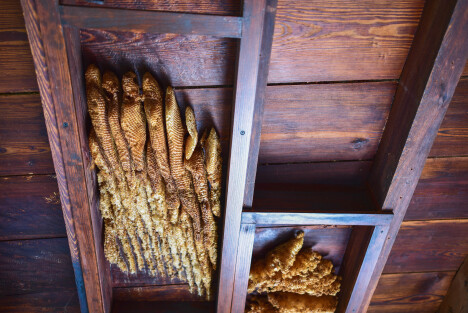
Bee swarms are on the move and looking for a new home at this time of the year. Cavity brick walls provide the perfect place for a hive because they are safe and warm and weep holes are the perfect entry point. Not only will honeybees produce comb in your wall within 24 hours, they can also eat through plasterboard, so the only thing protecting you inside your home is a layer of paint!
Recently, a Brisbane homeowner was alerted that bees were indeed making a home within her wall cavity when she heard them swarming around a weep hole. She watched them fly in and out, increasing in numbers as the day went on.
She promptly called an apiarist, Nicky, of Macbee Honey. The homeowner made the right move because you need to remove the bees. If you poison the hive, the honey and the dead bees will attract other pests and most likely a new swarm next season.
Apiarist Nicky and David, a local bee enthusiast, were able to locate the queen bee using a thermal imaging camera. They began cutting through the plasterboard in her exact location. However, the queen did not like being disturbed and moved quickly to avoid capture. Unfortunately, more plasterboard had to be cut to finally trap her. Once she was in their grasp, she was placed in a bee transport box and located directly outside of the weep hole.
The bees immediately began flying out of the wall cavity to follow the queen into the box. Nicky would return later that evening to relocate the bees when they were resting. With the queen safely removed, the beekeeper could appreciate the sweet smell of honey that emanated from the small honeycomb.
Nicky recommended that the homeowner install Weepa’s Protector Weep Hole Screens to prevent bees trying to make a hive within the wall cavity again. The homeowner was quickly onto this and in contact with us at Weepa to tell us about her bee adventure. Protectors were swiftly installed, much to her relief.
This story is all too common at this time of year, so it’s best to get Protectors installed in weep holes before you hear buzzing.



